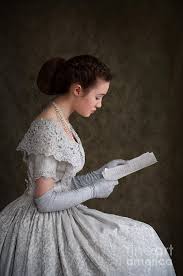Ann Evans: Hints & Tips #4
22 July 2020

Dialogue! Some writers love it others dread it! But a few lines of good dialogue can reveal more about character, emotion and plot than pages of narrative. And most importantly, dialogue brings your story to life.
So, what’s the trick about writing good dialogue?
Basically, characters need to have something to say! That might sound obvious. But sometimes we struggle to write dialogue simply because nothing is happening. If you find yourself writing a scene where nothing much is going on, consider whether you need that scene at all. Maybe you could ‘fast forward’ with a simple transition e.g. By Monday morning she was all set to face him. Or e.g. The last thing she expected was him turning up on her doorstep.
Additionally, when you have your character in a situation where something is happening, that character needs to have an opinion or be affected by the situation. The stronger that opinion, or the more they are affected, the more your character will have to say about it. If you understand how your character is feeling, then the right words will tumble effortlessly from their lips.
Make sure all your characters have opinions, let them be conflicting. Create that scenario and you’ll have lively dialogue.
But of course, dialogue is much more than two people expressing their opinions on a subject. Importantly, it drives the story forwards. Through dialogue you can explain the past, the present and the future. Dialogue reveals the moods of the characters and can set the mood for an entire scene or chapter. And of course, a simple word or sentence can completely change a mood or the emotions of your characters – or turn a whole situation around.
Through dialogue you paint pictures of places, people, objects, even the weather, or the time of day or season. Sometimes, long descriptive sections of narrative can slow a story right down, so while you may need to set the scene you don’t want to slow the action. A select few words of speech from a character can do just that.
This extract comes from my YA book, Celeste. Jamie has had a vision of a past life. These few lines show what happened in the past, provides description of characters both then and now. I think it also shows the friendly relationship between Jamie and Freya; the narrative shows Megan’s fears.
Megan’s heartbeat quickened. “What can you see?”
Freya rolled her eyes heavenwards. “Oh, don’t encourage him.”
“The sun is just going down,” Jamie continued, gazing over their heads. “The sky is a brilliant red, and Freya here is all uptight about something. You’re quite small – smaller than you are now and that’s hard to imagine, isn’t it.”
“Just because you’re lanky, Freya said defensively.
“Your hair is right down to your waist, it’s all wavy and half tied back in a blue ribbon. You ought to grow it like that again, you know.”
“Get on with it!” Freya moaned.
“Okay, right, you’ve got a blue dress on, and I get the feeling that someone has died and you’re really frantic about something… But that’s about it.”
Somehow, Megan kept walking. But the playground had become a blur and her head was spinning crazily.
Dialogue also reveals the personality of each character. The way they speak, the things they say, it all adds up to the reader really getting to know that character. It’s the perfect method to ‘show don’t tell’. You want to show a character who is for example, moody, or witty, or romantic, then this can come across in the words they say. Similarly, don’t just tell the readers about two people being in love, or hating one another. Show this through their conversations.
From A Place to Belong, Lily has fallen for Prudence’s suitor. Now she has to help Prudence dress for their meeting.
“The scarlet gown , then?” suggested Prudence. “It has such a deliciously naughty scoop to the neckline.”
Lily brought out a lace blouse with a high collar and matching skirt in an embroidered ivory silk. “This is lovely, and not so revealing.”
“Oh, Lily! Why must you always be so dull and sensible? I want to look ravishing for my future husband.”
Dialogue also plays a major role in developing relationships. The conversations characters have with one another will reveal emotions, changing emotions and so much more. Your characters might be saying one thing but meaning another.
“Did you sleep well last night, Lily?”
“Yes, why shouldn’t I?”
“You didn’t hear me knocking at your bedroom door, whispering your name?”
A moment of hesitation might have given him a truthful answer, but she responded, “I told you, I slept soundly.”
It’s worth remembering too that dialogue should sound like real speech but actually it only gives the impression of real speech. Real speech would be littered with umms and ahhs, and y’knows etc. Dialogue gives the impression of real speech with all the unnecessary words taken out.
Reasons for dialogue:
- To carry the story forward.
- To characterise the speaker and other characters.
- To show the emotional state of the speaker.
- To describe or set the scene or mood.
- To increase the tension and suspense.
- To provide the reader with necessary information.
More dialogue top tips:
- Make every word of your dialogue count. It is not there to pad out your story.
- If something is mentioned in dialogue, then it is there for a reason. The reader may not know that reason at that moment, but later in the story it should become clear.
- Avoid littering your dialogue with irrelevant, unnecessary facts that come to nothing it. This can mislead the reader as well as slowing your story down and spoiling it.
- Be careful not to duplicate. If you’ve mentioned something in the narrative, there’s no point in bringing it up again in conversation, and vice versa.
- And while dialogue is great for providing the readers with important information, be careful one character isn’t telling another character something they already know, just for the benefit of the reader.
- Dialogue is the perfect way of starting – and ending a story.
- Make every word of your dialogue count. It’s not there to pad out your story.
- Avoid littering your dialogue with irrelevant, unnecessary facts that come to nothing.
- Avoid duplicating information. If you’ve already mentioned something in the narrative, there’s no point in bringing it up again in conversation, and vice versa.
- Dialogue needs to sound natural, and let each character find their own way of speaking. Don’t allow your characters to all sound the same.
- Attributions/speech tags such as he said are fine. If you try too hard over your tags, it draws the reader’s attention to it, rather than the dialogue itself.
- Avoid using adverbs too often at the end of speech tags, E.g. he said merrily.
- Combining narrative with dialogue makes the writing flow and enables you to do away with the need for a speech tag.
- Be careful with slang as it can ‘date’ a story. However, do abbreviate words to make them sound more natural.
- Four lettered words: Think about your audience. Don’t ruin your chances of acceptance because of a swear word. In adult fiction, one swear word can add impact whereas constant swearing is boring and irritating to the reader.
- Punctuation around your dialogue is so important. Learn how it should be written. Be consistent and meticulous about it.
- If you know your market, check whether to use double or single speech marks.
So, enjoy putting words into your character’s mouths! Happy writing everyone
Ann

Ann Evans writes romance under the name of Ann Carroll, she also writes thrillers, books for children, YA and reluctant readers. She is also a freelance feature writer for various magazines.
Website: www.annevansbooks.co.uk
Facebook: https://www.facebook.com/annevansbooks/
Twitter: https://twitter.com/annevansauthor

Find more writing tips in Ann Evans’ book, Become a Writer – a step by step guide.
https://amzn.to/3487fws



